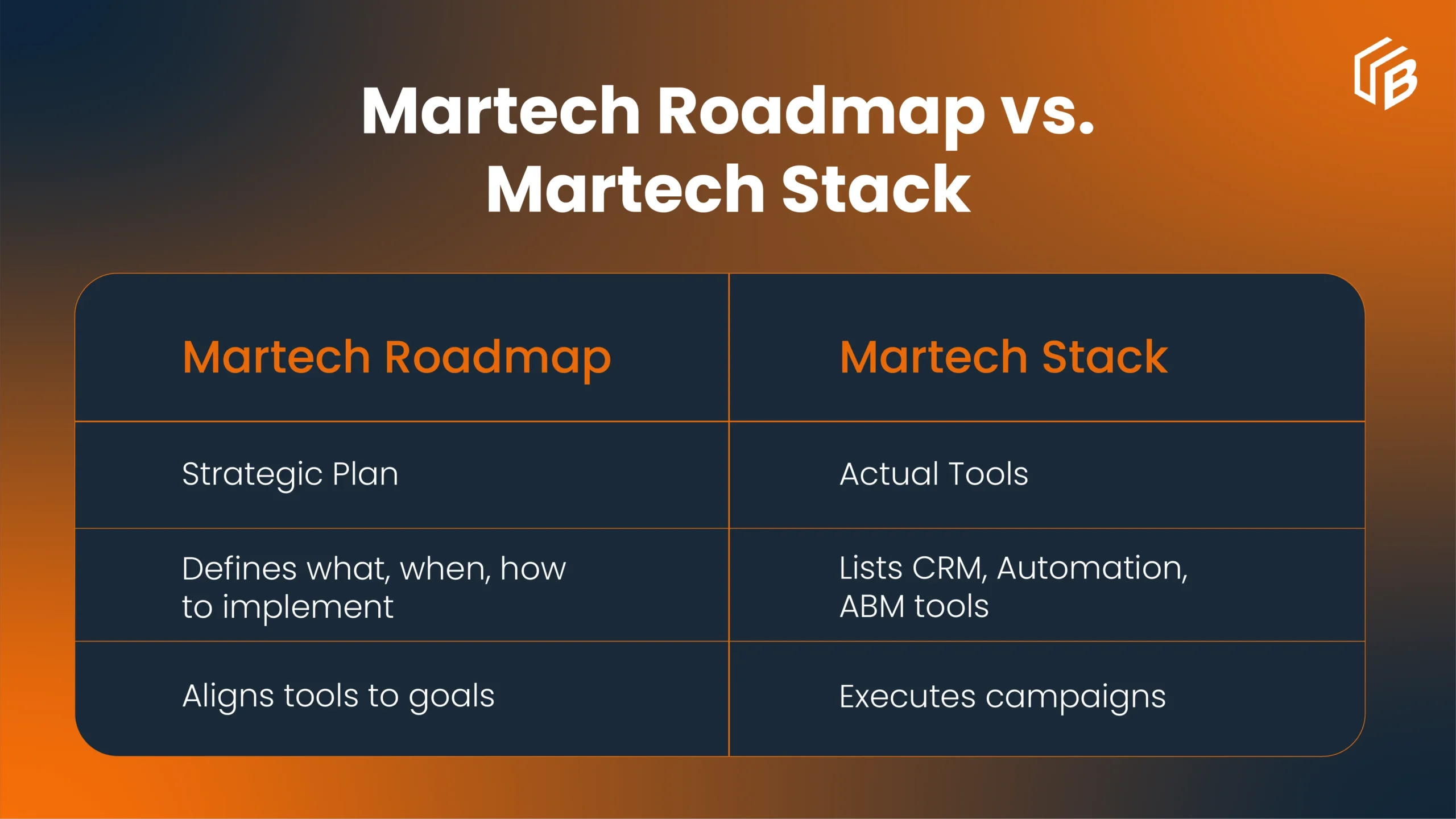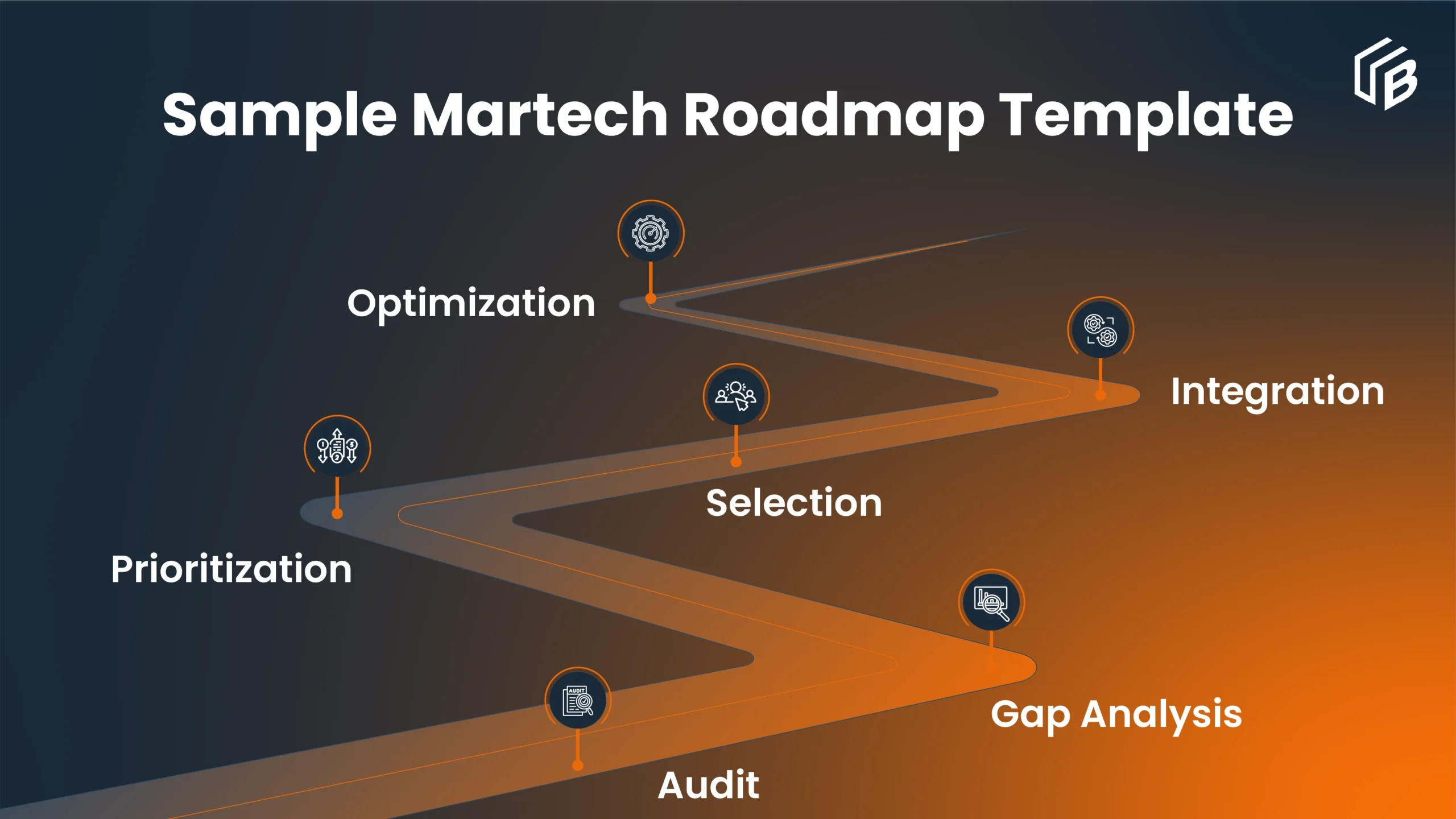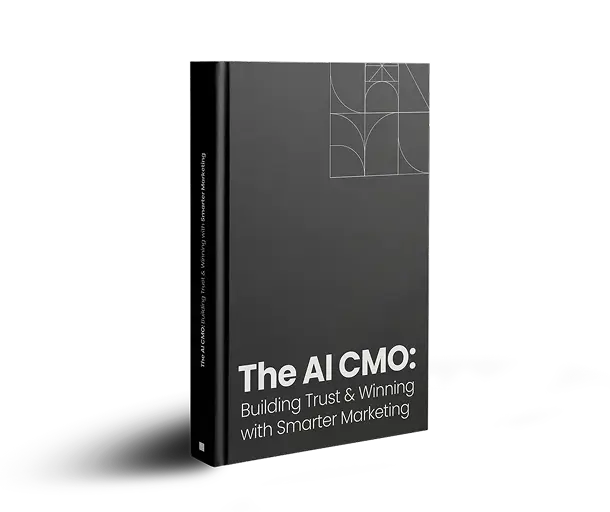
Highlights
- Clear definition of what a martech roadmap is and why it matters
- Step-by-step process for how to build a martech roadmap
- Martech stack examples for B2B companies in 2025
- Key martech tools and platforms to prioritize
- Martech roadmap best practices to improve ROI
B2B companies that maintain a clear marketing technology roadmap use a greater share of their martech stack’s capabilities, reduce wasted spend by up to 26%, and launch campaigns faster, with 70% of high-growth teams going live in under 30 days. In 2025, marketing leaders face tech sprawl, redundant tools, and fragmented data. The solution? A clear martech roadmap that aligns technology investments with business outcomes and accelerates growth.
A clear marketing technology roadmap helps CMOs avoid the shiny-object syndrome.”– Gartner 2025 CMO Report
What is a Martech Roadmap and Why Does It Matter in 2025?
A martech roadmap is a structured plan for selecting, implementing, and integrating your marketing technology stack to meet business goals. It’s a strategy that ensures your technology supports your go-to-market motion.
Difference from marketing technology stack:
- A marketing technology stack is the collection of tools you use (CRM, automation, analytics).
- A martech roadmap is the plan that determines which tools you need, when to implement them, and how they work together.
For B2B companies, a roadmap is critical because it keeps tech investments aligned with revenue goals, helping avoid wasted spending and underutilized software.

Who Needs a Martech Roadmap
A B2B marketing technology roadmap is a critical planning tool for every team responsible for growth. Here’s who benefits the most:
CMOs and Marketing Leaders: They need a clear view of technology investments to plan budgets, justify spending to the board, and connect martech spending to pipeline impact.
Marketing Operations Teams: They own the stack’s day-to-day performance, making sure data flows seamlessly between tools and that the stack supports key processes like lead scoring, routing, and attribution.
Demand Generation, ABM, and RevOps Teams: These teams rely on a connected stack to orchestrate campaigns, personalize outreach, and measure funnel performance. Without a roadmap, campaigns risk being delayed or misaligned.
IT and Data Leaders: They ensure compliance, data security, and smooth integrations between platforms, preventing tech silos and duplicated efforts.
When these GTM stakeholders collaborate on building and updating the roadmap, adoption rates soar, cross-team alignment improves, and ROI from the martech stack increases significantly. A roadmap becomes the single source of truth for technology priorities, making execution faster and more efficient.
Why a Martech Roadmap Is Critical for Digital Transformation
Digital transformation is about creating a connected, data-driven marketing ecosystem that accelerates growth. Without a clear plan, most B2B companies end up with bloated tech stacks, overlapping tools, and fragmented data that slow down execution.
A well-structured martech roadmap solves this by:
Eliminating Redundant Tools: It identifies where multiple platforms perform the same function and consolidates them, saving budget and reducing complexity.
Aligning Tools to the Customer Journey: Every platform in the B2B martech stack is mapped to a specific stage, awareness, engagement, conversion, and retention. So, you’re not investing in tools that don’t drive business outcomes.
Improving Lead Management and Personalization: With a unified stack, data flows seamlessly, enabling better lead scoring, routing, and hyper-personalized campaigns.
Powering Advanced Analytics and AI: A connected roadmap creates a single source of truth, allowing marketing teams to leverage AI-driven insights, predictive lead scoring, and real-time decision-making.
Pro Tip: Treat your martech roadmap as a growth engine, tie every decision to measurable outcomes like pipeline acceleration, improved customer retention, or reduced cost per acquisition. This ensures technology doesn’t just exist in your stack but actively contributes to revenue.
Where to Start: Building Your Marketing Technology Roadmap
Building a marketing technology roadmap starts with clarity not technology purchases. Here’s how to begin:

1. Audit Your Current Stack:
- List every tool currently in use (CRM, automation, analytics, ABM, etc.).
- Note ownership, cost, and utilization rate for each.
When assessing your existing tools, don’t just look at what’s in use today, evaluate them against your organization’s workflows, integration points, and strategic gaps. As Carrina Ekvall, Sr. Director of Marketing at Recurly, advises:
“Evaluate existing technology based on your organization’s critical workflows, any gaps you have, and how they are integrated today. When looking at new, what gaps can they fill or are there opportunities to consolidate. Budget and resources are also factors.”
2. Map Tools to the Buyer Journey:
- Align platforms with funnel stages: awareness, engagement, conversion, retention.
- Spot gaps where you lack coverage (e.g., personalization or attribution).
3. Identify Redundancies:
- Look for overlapping tools with similar functionality.
- Consolidate where possible to cut costs and simplify workflows.
4. Prioritize Needs:
- Rank new technology requirements by business impact and urgency.
- Involve GTM teams to ensure alignment with revenue goals.
5. Visualize with a Template:
- Use a martech roadmap template or martech map 2025 to create a single view of your stack.
- This makes it easier to communicate with stakeholders and plan phased rollouts.
When to Build and Update Your Martech Roadmap
Your B2B martech stack should evolve with your business. Here are the best times to build or refresh your roadmap:
1. Annually (Strategic Planning):
Review your stack every year to align with new GTM goals and budget cycles.
2. Before Budget Allocations:
Optimize spending by ensuring you’re not paying for underutilized tools or overlapping subscriptions.
3. During Key Business Changes:
- Product launches
- Market expansion
- Mergers or acquisitions
These events often require new integrations or capabilities.
4. When Tech Utilization Drops:
If adoption rates fall below 50%, it’s time to retrain, replace, or rethink tools.
Keeping your roadmap updated ensures your martech investments stay lean, efficient, and competitive, not just in 2025 but for the long term.
How to Build a Martech Roadmap
Follow these steps to create a martech roadmap that actually drives results:
1. Audit & Discovery
- List every tool in your current marketing technology stack.
- Document cost, owner, and utilization rates.
- Flag duplicate features or underused licenses.
2. Prioritize Use Cases
- Map tools to specific business goals like lead gen, ABM, retention, and reporting.
- Rank by potential revenue impact and operational efficiency.
3. Select Tools & Platforms
- Choose marketing technology solutions that integrate easily with your stack.
- Evaluate martech vendors (request demos, check integrations, read case studies).
- Examples: CRM: Salesforce, HubSpot | Automation: Marketo, Pardot | ABM: 6sense, Demandbase.
4. Integrate & Optimize
- Connect systems to enable seamless data flow.
- Remove silos and apply strong data governance rules.
- Ensure attribution, analytics, and reporting work across platforms.
5. Train & Adopt
- Create enablement sessions and onboarding programs for teams.
- Monitor adoption rates, a tool unused is wasted.
- Encourage feedback to improve usability.
6. Measure & Refine
- Track ROI, campaign performance, and stack utilization regularly.
- Review your martech roadmap every 6–12 months.
- Sunset tools that no longer deliver value and invest in emerging solutions.
Pro Tip: Build a visual martech roadmap template that shows priorities, timelines, and ownership. This keeps everyone, marketing, IT, and RevOps aligned.
Martech Stack Examples for 2025
Here’s what a lean, modern B2B martech stack might look like in 2025:
- CRM: Salesforce, HubSpot
- Marketing Automation: Marketo, Pardot, HubSpot Marketing Hub
- Analytics & BI: GA4, Looker, Power BI
- ABM & Intent Tools: Demandbase, 6sense
- AI-Powered Tools: Predictive lead scoring, content personalization engines
- Customer Data Platforms (CDPs): Segment, mParticle
FAQs
1. What is the Difference Between a Martech Roadmap and a Marketing Technology Stack?
A martech roadmap is the plan and strategy; the stack is the collection of tools you use.
2. Which Martech Tools Should Enterprises Prioritize in 2025?
CRM, automation, CDP, analytics, and AI-driven personalization should top the list.
3. How do I Evaluate Martech Vendors Effectively?
Use scorecards, check integrations, ask for case studies, and pilot before committing.
4. What’s a Good Martech Roadmap Template for B2B Companies?
A visual template that maps tools to funnel stages like awareness, engagement, conversion, retention.
5. How Does a Martech Roadmap Support Growth?
By aligning technology to GTM strategy, improving ROI, and enabling better customer experiences.
Conclusion
A well-planned martech roadmap transforms technology from a cost center into a true growth engine. Instead of juggling disconnected tools, B2B marketers gain a clear, unified view of their marketing technology stack, ensuring every platform has a purpose and delivers measurable results.
Consolidating redundant tools, improving data flow, and aligning technology with business goals leads to budget savings, faster campaign execution, and stronger ROI.
In 2025 and beyond, companies that treat their martech roadmap as a living strategy will outpace competitors, delivering not only better ROI but also stronger customer experiences.
Our blog
Latest blog posts
Tool and strategies modern teams need to help their companies grow.

Struggling to convert your SQLs? Learn the common mistake B2B companies make and opti...

Turn your owned channels into a precision account-based marketing (ABM) engine that w...

In this article, we’ll explore how AI-driven content, AI lead scoring, and AI-drive...





